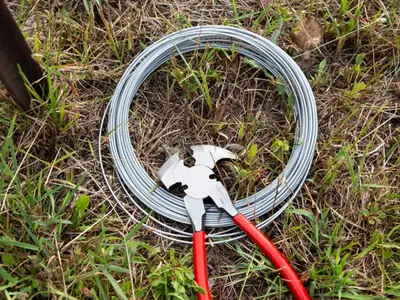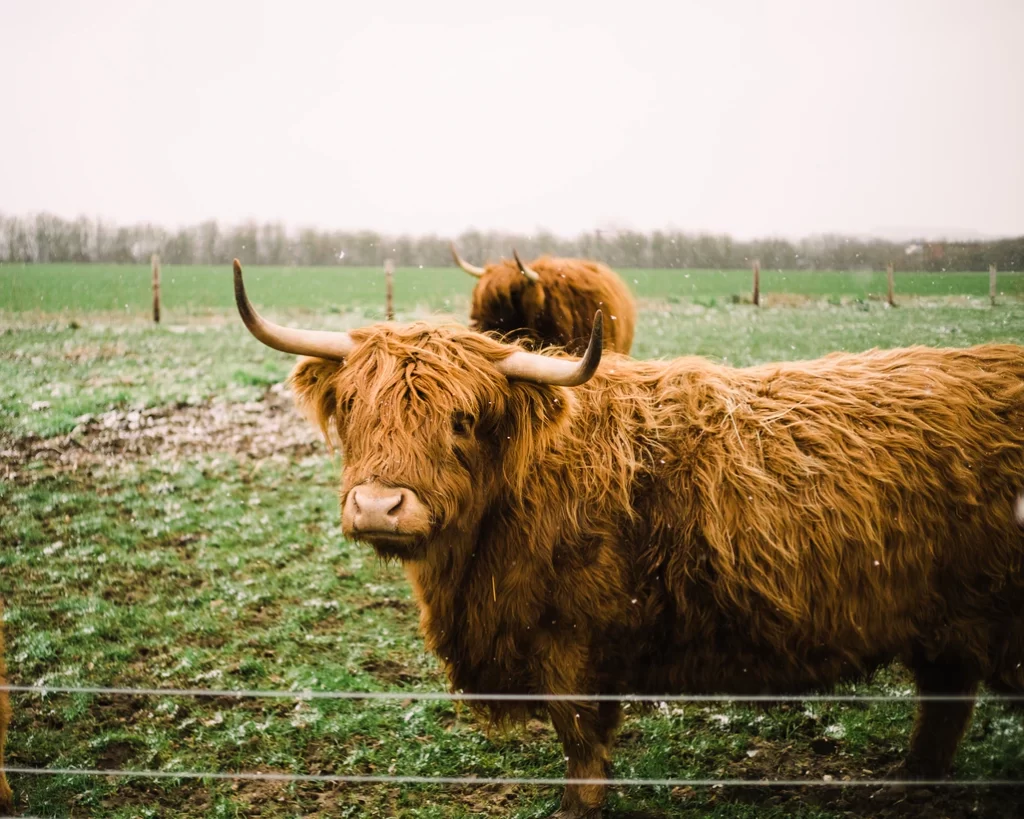Electric fences are often used to protect livestock and keep pets in a designated area.
While they’re certainly useful, there’s the concern that these fences can harm the animals they’re designed to protect.
Will an electric fence hurt a dog? How badly does an electric fence shock dogs, and can it cause lasting injury?
We’ll answer these questions and more in this guide to understanding the risk of using electric fences and if the risk is the same for in-ground dog fences.
Read on to see what you need to know.
Disclaimer
Before opting for an electric fence, we highly recommend obedience training and taking the time to understand the process.
Training your dog can prevent the potential stress of an electric fence collar, and focuses on positive cues to reinforce boundaries.
While electric fence collars aren’t innately harmful, for certain dogs they can cause potentially severe emotional distress without the proper training.
Check out brain training techniques, a science-backed way to improve your dog’s behavior without the use of force or dominance!
Will an Electric Fence Hurt a Dog?

No, a traditional electric fence will not hurt a dog, though dogs should be kept away.
While electric fences don’t typically conduct enough energy to cause injury to any animal, they are designed to contain cattle, not dogs.
A dog will find an electric fence much more painful than a cow or horse will.
This is because the fence voltage must be high enough to contain livestock, so a small dog will receive too much voltage to be safe.
Livestock electric fences are much different than an in-ground electric dog fence which only gives enough of a static shock to remind the dog to stay in the yard.
These never cause injury to dogs.
International law prohibits the production of electric fences that can cause death.
So let’s look and see how much of a risk these electric fences as well as invisible fences are to your dog.
Read More: Are Electric Dog Fences Legal? Electric dog fences may be prohibited by local law. Here’s how to find out and alternatives you can try instead!
How Much Does an Electric Fence Hurt a Dog?
Electric fences are designed to walk a fine line. They need to be capable of repelling animals without causing injury.
They have to keep livestock inside and predatory animals, including dogs, outside.
To strike a balance between ineffectual and lethal, fences need to be tuned to the animals they’re designed to contain.
A dog that contacts an electric fence will not try again.
The dog may be burned if the electricity is high enough, though the shock is so short this is unlikely unless the dog gets snared in the fence.
If the dog is snared in the fence it will very likely die.
Ranchers that often lose sheep, calves, and foals to wolves, coyotes, and wild dogs use these fences to keep dogs out of the flocks for the safety of livestock.
If you know that there is an electric fence within the range of your dog’s wanderings, take special care to train the dog to stay away.
The Voltage of Electric Livestock Fences
It’s recommended that cattle be contained with between 4,000 and 5,000 volts of electric current.
This is because cows are so immense with thick hide and they’ll likely trample a fence with less current.
However, sheep, commonly insulated with vast outer coats of wool, might be completely unaffected by this.
Thus, wooled animals might require an even greater charge to contain them, reaching into the 7,000 to 9,000 volts range.
For comparison, it’s recommended that fences tuned for household pets carry no more than 3,000 volts at a given time.
See our related article, How to Touch an Electric Fence Without Getting Shocked. If you need to work on your electric fence, here’s how to do it safely!
What’s the Shock of an Electric Livestock Fence for?

The purpose of an electric fence is not to harm or hurt an animal.
It’s designed to surprise and educate it. As a result, it’s important to ensure that the fence doesn’t deliver an overly-powerful shock.
The aim of an electric livestock fence is to keep livestock in and predators out.
The fence is meant to deliver the message the first time an attempted breach is made.
Ranchers have a lot of problems with predators, including large dogs, hunting for newborn livestock, especially, but also smaller animals like goats and sheep.
The electric fence is there to protect the animals.
Electric Fence Voltage Comparison Chart
| Animal | Voltage | Recommendations |
|---|---|---|
| Pets | 700 – 1,000 volts | The normal range for most household pets. Consider using the high end if the pet is shaggy or large. |
| Pigs | 2,000 volts | Pigs often dig under the ground searching for roots. Invest in low wires to help contain this tendency. |
| Horses | 2,000 – 3,000 volts | Horses are easily startled. Consider high wires to dissuade jumping. |
| Cattle | 2,000 – 3,000 volts | A higher range of charge and denser wire structure may be needed for aggressive bulls. |
| Bears | 4,000 – 5,000 volts | Thick coats combine with ornery dispositions, making these animals formidable, and greater voltages wise. |
| Wolves | 4,000 – 5,000 volts | Heavy coats and pack mentality create aggressive threats to farm life – high voltage fences are advised. |
What Kind of Injuries Can Occur From an Electric Livestock Fence?

Typical injuries from electrocution are comparable across species.
You may find first or second-degree burns if an electric shock is powerful enough, or if exposure to the electric charge is prolonged.
Adding to this danger is the fact that, when exposed to a shock of sufficient potency, an animal’s muscles are liable to contract tightly, which could make it impossible for the animal to free itself if it gets ensnared.
Beyond burns, the electric signals within a mammal’s body can be overstimulated or canceled out by electrocution.
Other electric fence shock side effects could include disturbed heart function, potentially resulting in cardiac arrest. This depends on the size of the dog and the voltage and duration of the shock.
The fence is not strong enough to directly cause death, it can occur if the dog suffers from prolonged exposure to the electricity.
These dangers are compounded if the dog in question is older, or already presents heart problems, both of which may be exacerbated by high voltage.
How Can I Keep My Dog Safe Around Electric Fences?
It’s important to remember that these are worst-case scenarios. Normally a dog would not have the opportunity to become ensnared.
If the electric fence is well-maintained and installed as instructed, the danger of prolonged exposure is minimized significantly.
There are very rare stories of dogs being electrocuted by fences, and they’re sad but not the normal scenario.
In general, a dog will touch the fence, get a big jolt, then never do it again.
The best thing you can do is to supervise your dog and train it to recall on command. Obedience training is the best protection you can give your dog.
Read our related article, Can an Electric Fence Kill a Small Dog? We further explore the dangers of electric dog fences and traditional electric fences for dogs, small dogs, and puppies in this guide.
Properly Label Electric Livestock Fences
If the fence in question belongs to you, there are a few things you can do to keep your dog out of trouble.
- Place flags around the inside of the fence and train your dog to never pass the flags. This will keep the dog out of harm’s way.
- Ensure that the fence itself is well-labeled. It’s easy to mistake an electrified fence for a top wire, which can lead to injuries and legal risks to you. Make sure it’s clear the fence is electric.
- It’s also wise to acknowledge that, as a primarily psychological deterrent, there’s little structure to actually keep a dog or other animal inside (or out). The current has to be strong enough to maintain desired behaviors.
Read More: Should Electric Fence Ground Wire Be Insulated? Ground wire, both traditional and electric dog fence wire, should come insulated. Here’s what to do if there’s a break in the insulation.
In-ground Electric Dog Fences

Most people will immediately think of an above-ground wire fence when they hear the words “electric fence”.
However, in suburban areas, dogs are more likely to encounter underground dog fence wires.
Underground pet fences work totally differently than livestock fences.
Where the livestock fence is always electrified and you get a zap if you touch it, pet fences sit underground in a state of readiness.
The dog wears a receiver collar with two prongs on it.
If the dog gets too close to the buried wire the collar gives an auditory warning tone so the dog can turn and go back into the yard.
If the dog continues through the warning, the collar delivers a static shock.
It is similar to touching a doorknob and getting a shock on the fingers. It’s usually enough to send the dog back into the yard.
Read More: How Deep is Invisible Fence Buried? If you’re thinking of installing an underground fence for your dog, here’s a great place to begin!
Can an In-ground Electric Fence Hurt Your Dog?
No, because this type of fence is specifically designed to motivate, not punish.
Several key differences exist between traditional electric fences and their underground counterparts.
- Above-ground electric fences shock anything that touches them.
- There is no warning for a dog that they are approaching an electric fence.
- The electric shock is tremendously high for electric fences in comparison with in-ground dog fences.
- In-ground dog fences only shock the dog that’s wearing the receiver collar.
- In-ground dog fences give the dog warning before correction.
- In-ground dog fences give a small static shock to remind the dog of its prior training to remain inside the safe area.
For more on training your dog, check out our article How to Train Your Dog With an Invisible Fence.
However, there are other considerations.
Because there are no physical barriers to stop a dog from breaching the in-ground fenced area, it’s possible that your dog runs through invisible fence barriers, and ignores the fence’s feedback.
Additionally, because the collar component is operated with a battery, it’s possible that, if an owner is not attentive, the power can run out, leading to a lack of stimulation when the dog gets in range of the fencing.
Is the Receiver Collar Dangerous?
A properly fitted receiver collar poses no risk to the dog.
The collar should be loose enough to move around the dog’s neck, yet tight enough that the prongs touch the skin.
The prongs should never be tight enough to rub the skin or cause damage.
The collar should never be used with a leash because the prongs will hurt the dog.
Any collar can cause strangulation if it gets tangled in something while the dog plays. Consider using a breakaway collar if this is a danger for your dog.
Check out this video demonstrating how to choose a prong size and fit the collar properly:
Final Thoughts
Most of the time dogs are in contact with above-ground electric fences because they are on or near working ranches. Train your dog to stay away from these fences.
If your dog is being contained by an in-ground electric dog fence then you have to train your dog to stay inside the safe area.


